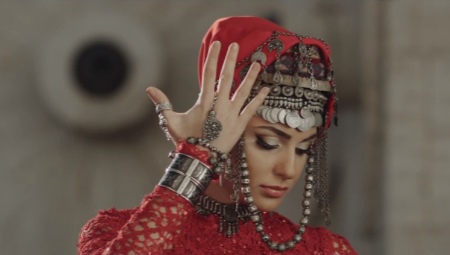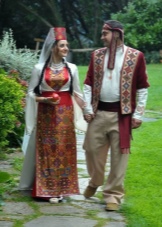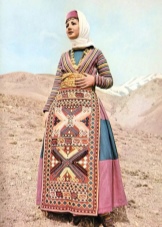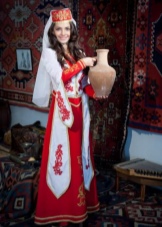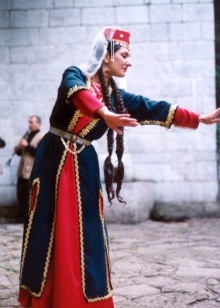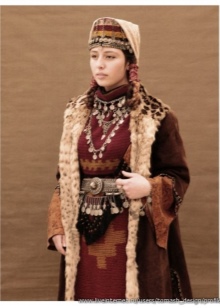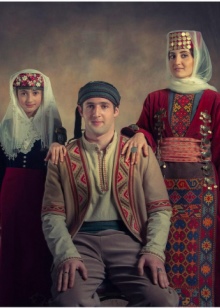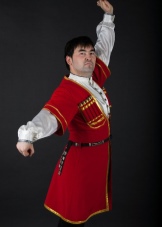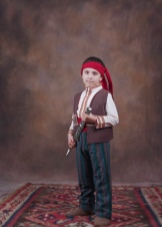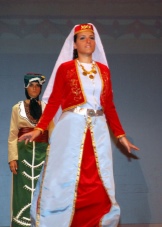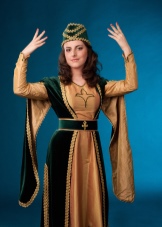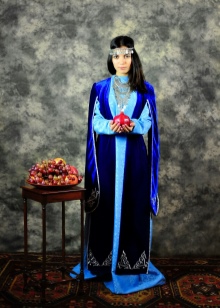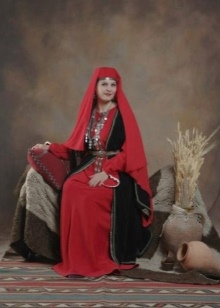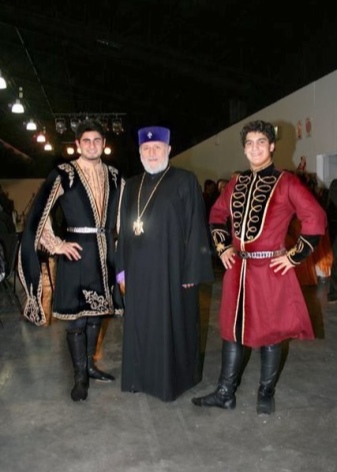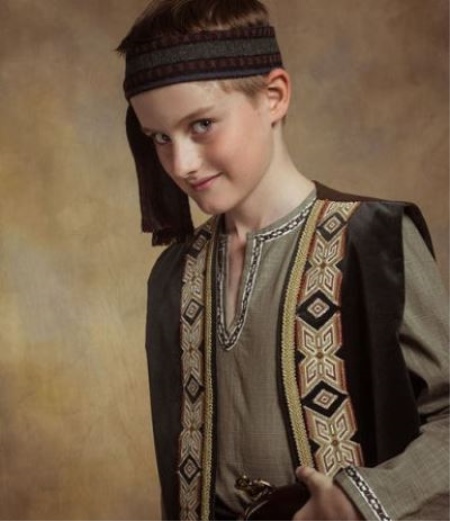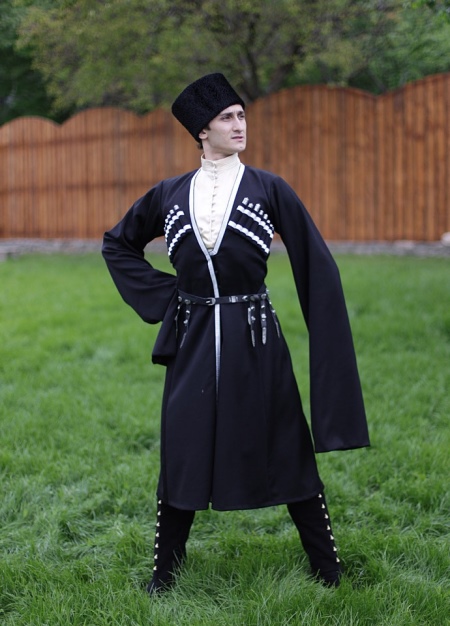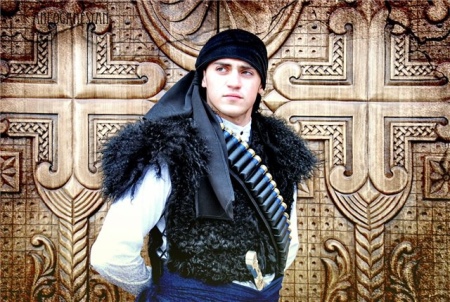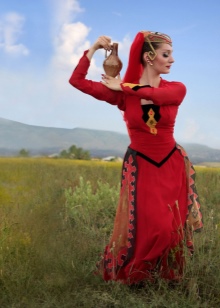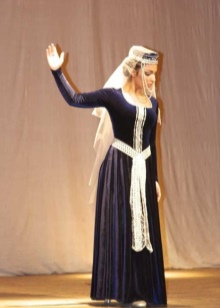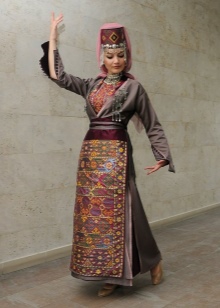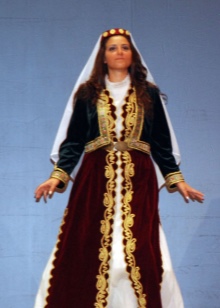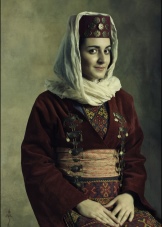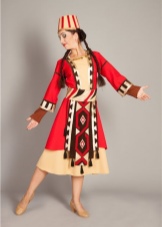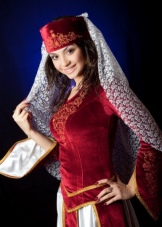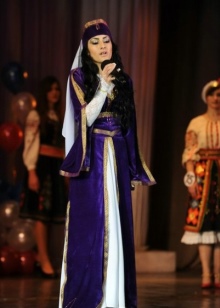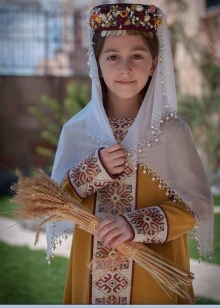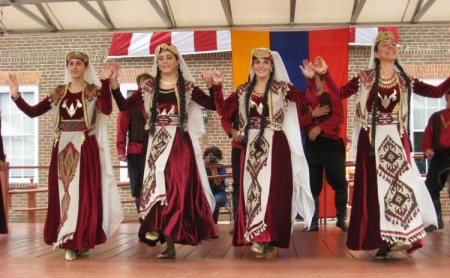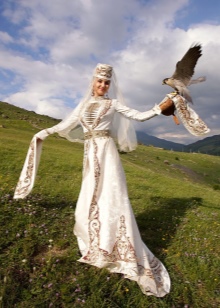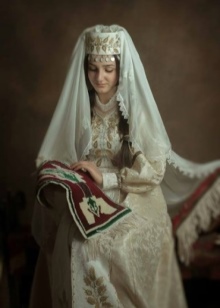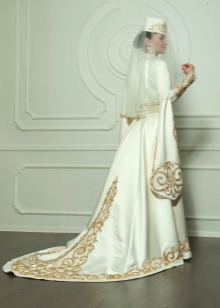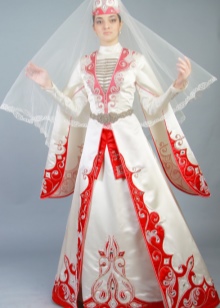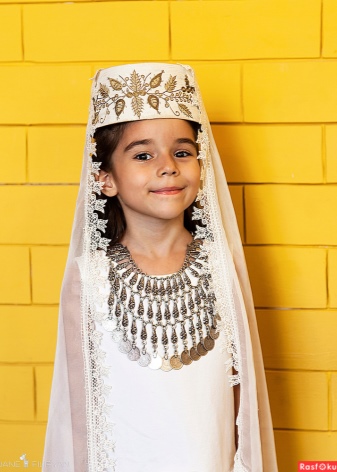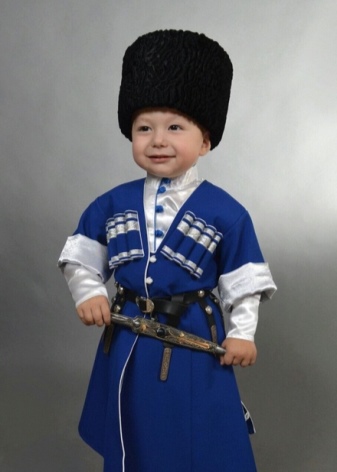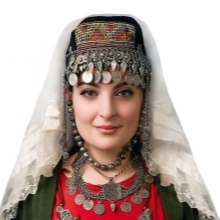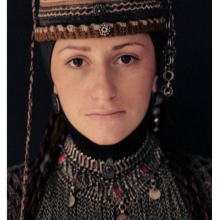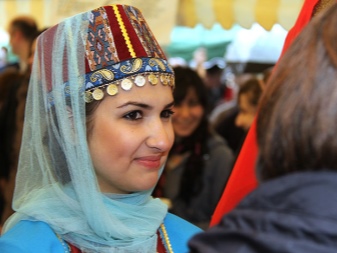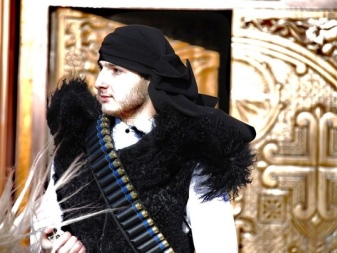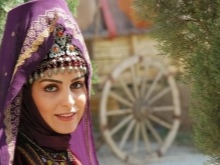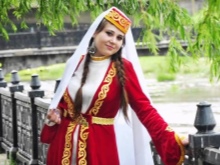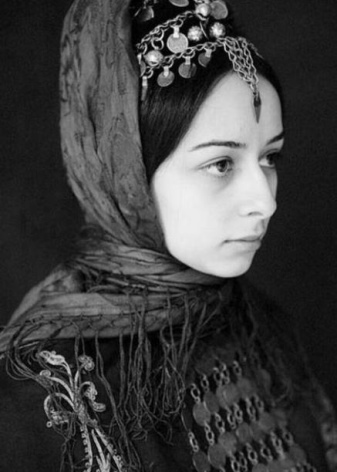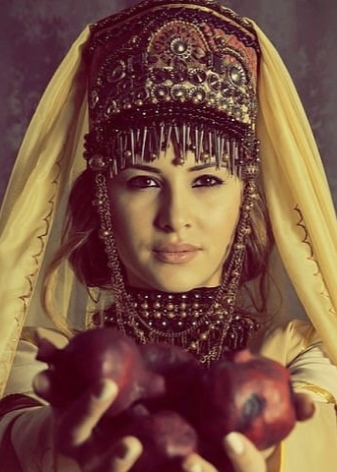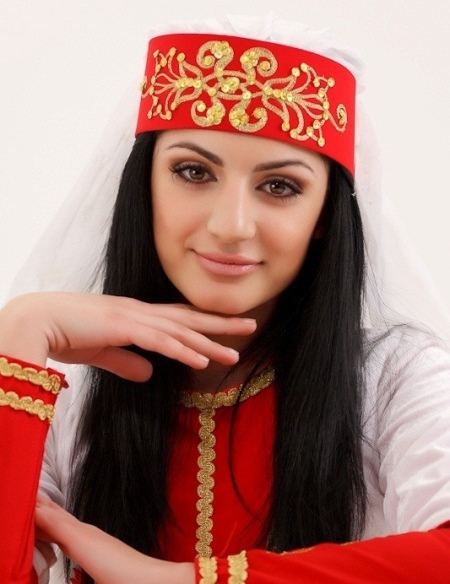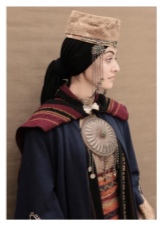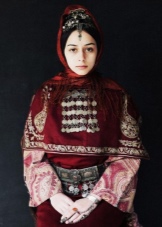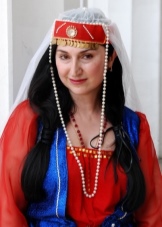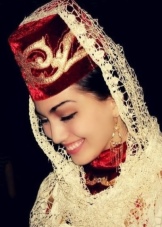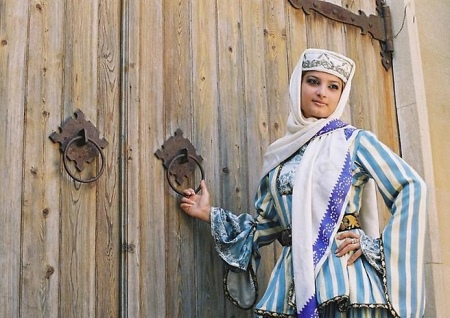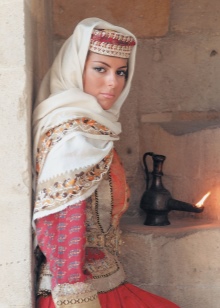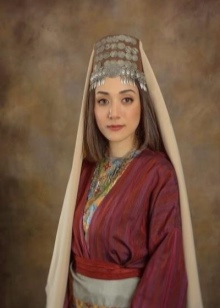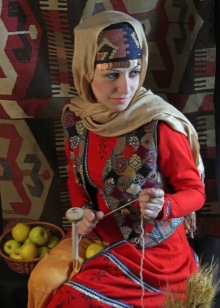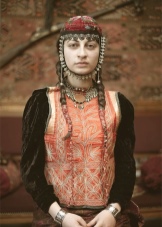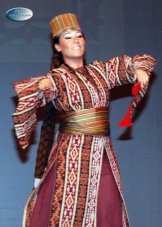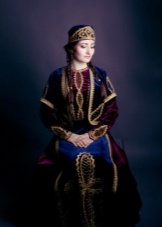The history of costume goes back thousands of years. It has developed in dozens of countries in different ways: somewhere - independently and separately, and somewhere - changing to the tastes of people. The traditional costume, in addition to its main function, could tell others about the place of residence of the person wearing it, about its activities, its family history, marital status and much more.
The development of the traditional costume and the birth of the country itself are inseparable, and the Armenian national costume (taraz) began its own emergence about three thousand years ago, in the age of the birth of the Urartian kingdom.
A bit of history
Urartu is a state located on the Armenian Highland in IX BC. er Undoubtedly, the combined set of tribes had their own distinctive features of the costume, but, unfortunately, information about them was not preserved.
Following the kingdom of Urartu in 189 BC. er Artasheside kingdom came, uniting the absolute majority of people who consider Armenian their native language. Art of artisans grew rapidly in Armenia, market relations developed with Iran, Indian peoples and Chinese, cities near the Mediterranean and Black Seas, and all this influenced the outfits of residents of sunny Armenia.
The baptism of the state pulled Armenia into a confrontation with Byzantium. Knowledge of folk costume for this period has been preserved very little, but it is known for certain that the nobility preferred outfits to the Persian court, while the rest of the population dressed quite ordinary.
In the period of Arab influence (640-885), part of the merchant class and princes adopted some details of the Arab garments. 1080-1375 they brought details of European costumes into the Armenian folk costume. The Tatar-Mongol raids of the XIII-XIV centuries, also did not leave the national clothes of the Armenians unchanged. During the Persian wars, three quarters of Armenia were seized by the Ottoman Empire, but the rest of the land was still controlled by Iran, which, in turn, also had its influence.
Thus, the suit, passing through time, war and peaceful times, times of growth and decline, borrowing and giving, took its own unique look.
Male models
The center of the men's traditional dress in Armenia is a shirt with a low collar, called a “cap”, and extensive trousers, which are called “shalvar”, tied down with a wide winding. The trousers were girded with small glasses (hodjans), embroidered with various patterns and even tassels on the endings.
In the east of Armenia, over their shirts, they wore arkhaluh - a swinging cape, fastened with small buttons or hooks, from the neck all the way to the waist. A warm pig - a coat-like outerwear was being thrown on the arkhaluk.
In the west of the state, arkhaluk replaces a tree - a vest worn on a shirt with sleeves decorated with embroidery. Elak was covered with a jacket with a solid sleeve, without fasteners, called “bachkon”. Shalvaras strongly curled down below and were called “vartik”. Beauty along was attached to the containing natural plot, embroidery.
In the cold, they dressed in sheepskin jackets, and in warm regions they used Kazakh coats made of wool from goats.
Female models
The basis of the women's wardrobe was: a spacious shirt - halab with oblique reciprocal inserts, extensive straight sleeves, an oval opening and neck on the chest, scarlet in residents of the east of the country, and light in Armenians living in the west, and trousers - hanged from red cotton and gathered at the ankles.On top of it was a lady’s arkhaluk of bright colors, for example, of blue, green or grape color, and on the chest there was a long stretch.
He smelled only at the waist. Below the belt on arkhalukh, a pair of vertical cuts were made on the sides, and it turned out that the archalukh had three floors: the first, the largest, behind, and a smaller pair on the sides. Therefore, the female arkhaluk has another designation - “Erek peshkan”, which is translated from Armenian as “three floors”.
On solemn days, a dress was worn on arkhaluh — a mintan, which was almost no different from arkhaluk, only it lacked side cuts. A scarf of beautiful fabrics or wool was tied to a belt, subsequently replaced by silver and gold belts, and the sleeves of the shirt were fastened with spherical buttons. From the top, when leaving the house, a large blanket made of fine wool was covered. Older women had a blue tint.
In the western regions of Armenia, instead of the arkhaluh, they wore a dress made of silk or batiste with cutouts below the waist, called “antari”. In winter, Jupp was worn over - another outfit, without mutual armholes. Juppa, for the most part, was sewn of dark blue cloth.
An important fragment of the woman’s attire was an apron with a narrow woven belt - spook. Absolutely all the ladies' vestments had exquisite sewing, in rich families embroidery was performed with silver or gold.
Wedding clothes
The wedding dress of the Armenians differed only in more expensive fabrics, as well as in other color solutions. An important element at the wedding was the silver belts handed to the bride's parents in the wedding process.
Baby clothes
The children's national costume in Armenia, for both the boy and the girl, did not have significant differences from the adult. Well, except that embroidered a little more modest.
Hats and accessories
Hats of Armenia are quite diverse. Male varied depending on the places of residence: in the east - fur, in the west - knitted and woven. Lori people loved big, low hats, zangezurtsy - hats were bigger, closer and less luxuriant. The urban people wore tall cylindrical caps. The inhabitants of the western regions received an extensive circulation of headdresses in the shape of a hemisphere, knitted from threads of the same shade, wrapped around with a twisted shawl.
From time to time the caps were made of colored threads with a predominance of red colors, had a conical shape with a truncated top 15–20 cm high and worn without a scarf. They also wore pointed (like the nearby Kurds and Assyrians) tapers, in the shape of a cone, felt hats, wrapping the top in a multi-colored or one-colored scarf, embroidered with a fabulous geometric or floral ornament.
In the eastern regions of the country, women wore hats resembling a “turret”, eight to twenty centimeters high, glued from layers of cotton fabric. In various regions of the country this decoration was called differently: “palti” (Artsakh, Syunik districts), “Pali”, “Poly” (Meghri and Agulis districts), “Baspind” (Yerevan and Ashtarak regions). Baspind covered part of the forehead, the front side of the "turrets" was brightened with an embroidered ribbon. Like most national clothes of Armenia, the traditional embroidery that adorned the baspind had a geometric or floral pattern.
Under the baspind, they tied a ribbon on their foreheads with fixed coins made of precious metals, and jewels made of silver balls and corals were fastened at the temples and covered the hair almost completely. Such an unusual headdress was tied with folded diagonally white shawls of cotton fabric, covering the neck and part of the face to the very nose. Initially, the scarves were snow-white, and later - reddish or greenish. The corners were tightly tied at the back of the head. On top of the baspind covered with colored shawl, fastened by a chain of precious metal.
An elegant addition to the headdress was the large buttons called kotosh. The head of the owner of such an ornament crowned the forehead with rows of gold coins and a noticeable large coin in the center, intricate pearl ornaments fastened to the temples, ending with the thinnest gold plates. Such an interesting precious decoration of the young groom presented the young bride on the day of the marriage. Wardes, as a rule, was crowned with a scarlet cap called “Thess” with a silk brush hanging behind.
This headpiece has not been removed for a long time. At night, the woman was asleep, placing a small mattress under her head. They tried to shoot baspind only in the absence of men, since in Armenia, as in most Eastern countries, it was forbidden to appear bareheaded before outsiders.
In the west of Armenia, girls decorated their heads with various headbands and various shawls. High, made of wood headbands were called "cat" or "ward." He hung around with velvet, pearls or decorated with classic sewing, the favorite themes of which were the sky, the sun and the stars. Subsequently, elegant talisman plates fastened to the embroidered part of the cat. The most elegant part of the seal thus crowned was called “Makhcha” or “Knar”.
Ward made of thin fabric, glued in several layers. He was also richly decorated with exquisite matter, precious metals and intricate ornaments. A favorite theme of the patterns were gardens, unusual birds, gorgeous flowers.
Young unmarried girls plaited a huge number of thin braids, the number of which reached forty. In order to lengthen them and make the hairstyle more rich, woolen threads were skillfully woven into the braids to match the hair, and decorated with silver balls and tassels. The Eastern Armenian covered her head with colored capes, and in the western part of Armenia women preferred to wear a felt cap called “gtak”, which has a bucket shape.
Unfortunately, in our time, national costumes in many countries because of the abundance of universal European clothing are not so popular or not used at all. Of course, for dancing, theater, filming and ordinary festivities, they are still indispensable, but less and less we meet in everyday life. But the suit will not be forgotten. Like the nations themselves, the national costume eventually takes on new forms, absorbs ideas, and will soon re-enter everyday life to others, but in fact, all the same.
